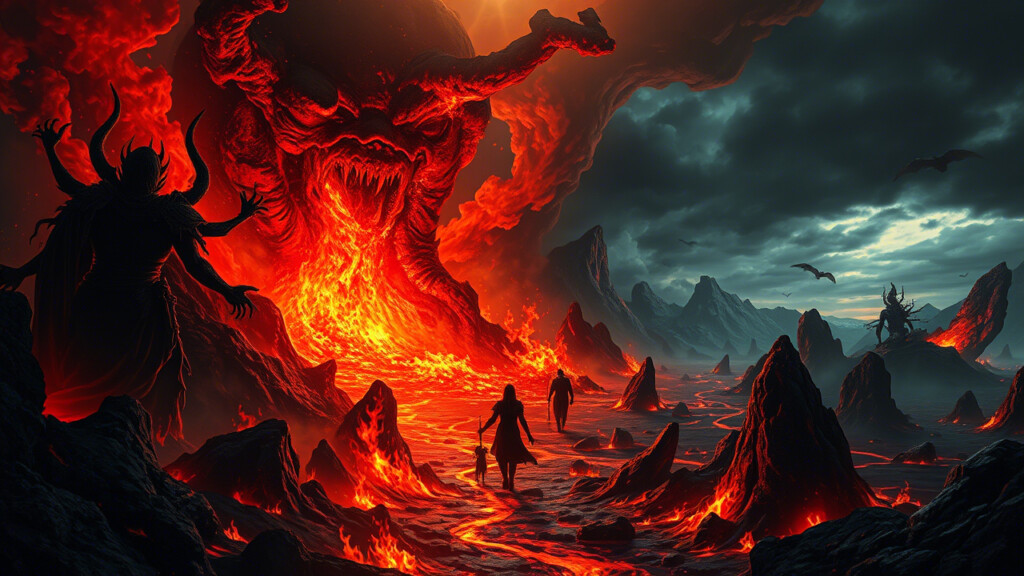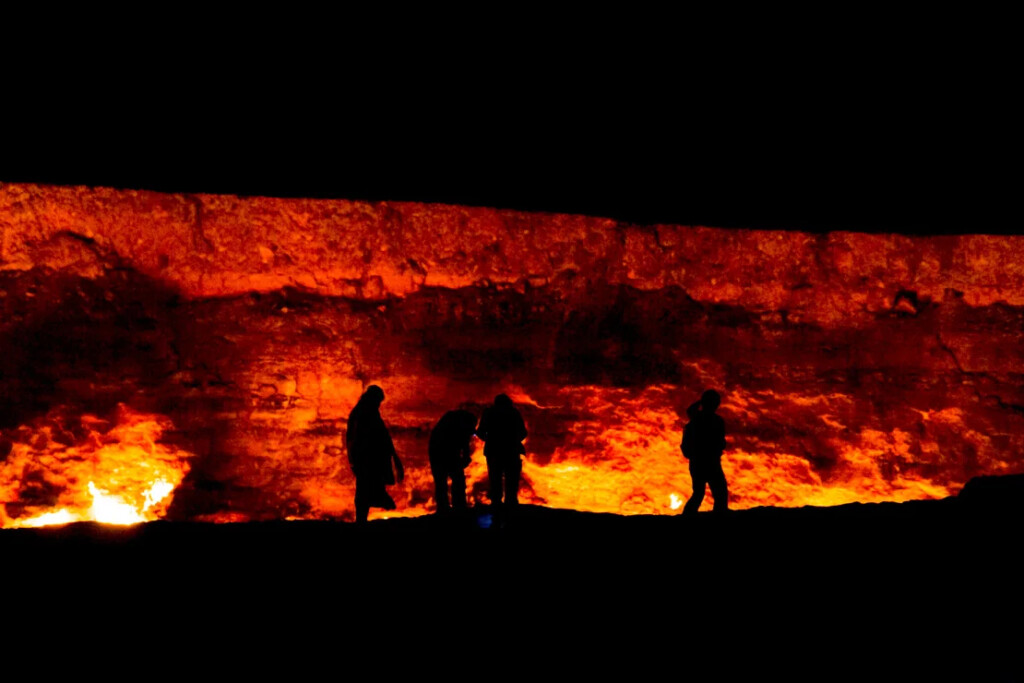Hell appears everywhere. It can be found in religious scriptures, where flames roar and demons lurk. It can be painted into existence by Bosch, depicting tortured souls trapped in an unending nightmare. Or, it can simply exist as an unsettling thought, a vague realm conjured up by humans to keep each other awake at night.

But what if hell were real? Is it an actual place, a symbol of fear, or merely a tool of control?
Hell’s Coordinates on the Map
Imagine if hell wasn’t just an abstract idea but could be pinpointed on a map. As strange as it sounds, there are places in the world named after or associated with the concept of hell.
🔥 The Door to Hell (Turkmenistan) – A massive gas crater that has been burning for over 50 years due to a drilling accident, lighting up the night sky like a grim reminder of destruction.

❄️ Hell, Norway – A small town that freezes over in winter. That’s right—“hell has frozen over” is not just a joke but a seasonal reality here.
🏜 The Acidic Kawah Ijen Crater (Indonesia) – A stunning blue lake filled with sulfuric acid, where billowing sulfuric gas creates a surreal landscape, as if hell itself is bubbling up from beneath the Earth.
These places raise an intriguing question: Do hellish landscapes exist on Earth, or is it merely our imagination projecting fear onto the world around us?
Hell as a Symbol of Fear
Every culture has its version of hell. In Greek mythology, it’s Hades—the underworld of shadows and lost souls. In Buddhism, it’s Naraka, where sinners are punished according to their karma. In Christianity, it’s the domain of Satan, a place of eternal torment.
But beyond its role as a place of punishment, hell has always served as a moral compass.
It makes people hesitate before making a bad decision.
It instills fear in wrongdoers about the price of their sins.
It is a tool of ethics, passed down through generations, fueled by the fear of consequences.
If heaven is the reward, then hell is the stick that keeps people from straying off the path. But is it just a psychological deterrent, or is it a genuine representation of an actual afterlife?
Hell as a Tool of Control
Since ancient times, the idea of hell has been used as an invisible form of power.
⏳ During the Middle Ages, Western religious institutions wielded the fear of hell as a means of control, turning it into a political weapon. Dissenters were not only exiled but also threatened with an eternity of suffering.
🔮 In many religions, hell is not just a place of punishment but also a lesson. It reminds people that actions have consequences, whether in this life or the next.
🚨 Today, the concept of hell thrives in pop culture—from horror films to video games, where it serves as a battleground for lost souls. Perhaps hell is no longer a supernatural belief but a symbol of the fear of hell itself, a psychological imprint passed down for centuries.
So, are people being controlled by religious narratives, or do they genuinely believe in an afterlife of punishment?
So, What Is Hell?
📌 Geographically, hell is real—from ever-burning craters to desolate, inhospitable landscapes.
📌 Psychologically, hell is fear, a deep-seated anxiety about the consequences of sin.
📌 Socially, hell is a tool of control, an invisible leash keeping people within the boundaries of morality.
So, where exactly is hell? Is it a tangible place or just a product of human thought? If one day, no one fears hell anymore, would it cease to exist?
Or perhaps, hell has never been anywhere at all—except in the darkest corners of the human mind.
